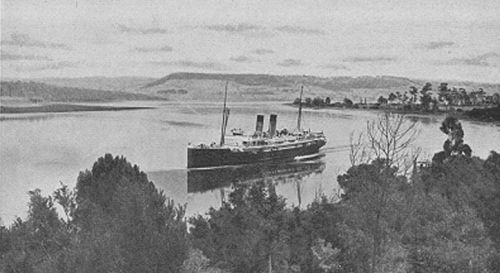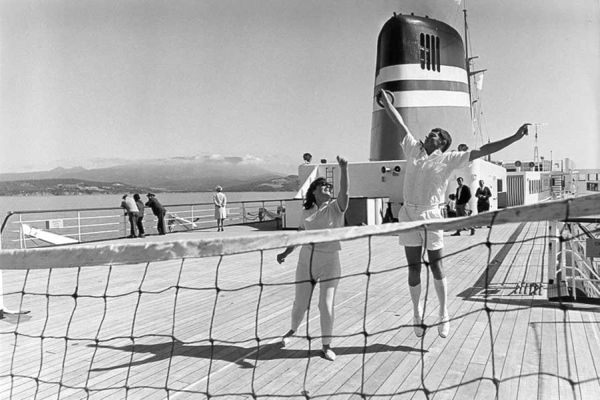 |
 |
|
Bass Strait Passenger Ships
Bass Strait passenger ships have necessarily been good 'sea boats'. They ranged in tonnage from the 776-ton Coogee of 1890 to the 31,350-ton Spirit of Tasmania of 1993. Their Tasmanian ports have been Burnie, Devonport and Launceston (Bell Bay from 1947). These ships were distinguished for various reasons. The Pateena (1883–1904) was fast for her day, at 15 knots. The Rotomahana (1891–1920), of graceful lines, had a bowsprit and figurehead. She sailed at 17 knots, flying a golden greyhound from her masthead. The handsome Loongana (1904–34) was the first with turbine propulsion to make a long sea voyage. For many years she held the record for a Bass Strait crossing (12 hours, 46 minutes, 22 knots), set while conveying rescue gear to Burnie at the time of the 1912 Mount Lyell disaster. The Nairana (3042 tons) was an armed seaplane carrier during the First World War and entered the Melbourne–Launceston service in 1921 after refit. On the Strait during the Second World War she was painted grey and again armed. In 1935 the Taroona, an oil-burning steamer, entered service. Originally beautifully fitted with timber panelling and marble, she saw war service as a transport in the Pacific before resuming ferry work. In 1959 the Australian-built Princess of Tasmania, based on English Channel roll-on ferries, began service from Melbourne to Devonport. Of 3981 tons, she carried 330 passengers, and 130 cars and trucks loaded through a stern door. The first to carry cars had been the Rotomahana, with six loaded on deck by crane after their petrol tanks were drained. The roll-on vessel gave unprecedented mobility to Tasmanian motorists. Demand gave rise to larger ships, and, for a while, the Princess was joined by the Empress of Australia (12,035 tons) and the Australian Trader. The use of multiple ships and ports was soon abandoned and the Empress replaced the Princess on the crossing to Devonport.
In 1985 the Tasmanian government introduced the first ferries with both bow and stern doors. The Abel Tasman (19,212 tons) was replaced in 1993 by the Spirit of Tasmania, carrying 1294 passengers and 550 cars at 17 knots. The Bass Strait service is currently operated by the stylish and comfortable Spirit of Tasmania I and II. At 28 knots, they have reduced sailing time from 14 hours to 10. Passenger services between Sydney and Tasmania resumed in 2004 with the Spirit of Tasmania III running to Devonport, but this service ceased in 2006. The best-known Sydney–Hobart passenger ship was the Zealandia, of 6600 tons, which operated from 1922 until 1940. Further reading: D Hopkins, The shipping history of the Bass Strait crossing, Devonport, 1994; P Plowman, Ferry to Tasmania: A Short History, Chiswick, 2004. Graham Clements |
Copyright 2006, Centre for Tasmanian Historical Studies |

